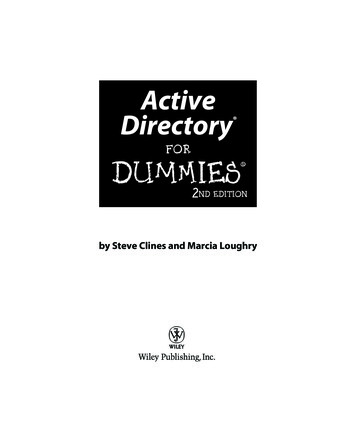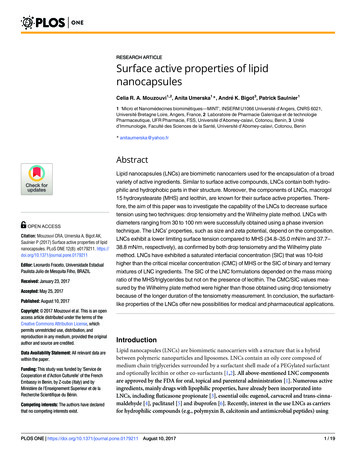
Transcription
RESEARCH ARTICLESurface active properties of lipidnanocapsulesCelia R. A. Mouzouvi1,2, Anita Umerska1*, André K. Bigot3, Patrick Saulnier11 ‘Micro et Nanomédecines biomimétiques—MINT‘, INSERM U1066 Université d’Angers, CNRS 6021,Université Bretagne Loire, Angers, France, 2 Laboratoire de Pharmacie Galenique et de technologiePharmaceutique, UFR Pharmacie, FSS, Université d’Abomey-calavi, Cotonou, Benin, 3 Unitéd’Immunologie, Faculté des Sciences de la Santé, Université d’Abomey-calavi, Cotonou, Benin* 1111a1111111111a1111111111OPEN ACCESSCitation: Mouzouvi CRA, Umerska A, Bigot AK,Saulnier P (2017) Surface active properties of lipidnanocapsules. PLoS ONE 12(8): e0179211. : Leonardo Fraceto, Universidade EstadualPaulista Julio de Mesquita Filho, BRAZILReceived: January 23, 2017Accepted: May 25, 2017Published: August 10, 2017Copyright: 2017 Mouzouvi et al. This is an openaccess article distributed under the terms of theCreative Commons Attribution License, whichpermits unrestricted use, distribution, andreproduction in any medium, provided the originalauthor and source are credited.Data Availability Statement: All relevant data arewithin the paper.Funding: This study was funded by ‘Service deCooperation et d’Action Culturelle’ of the FrenchEmbassy in Benin, by Z-cube (Italy) and byMinistère de l’Enseignement Superieur et de laRecherche Scientifique du Bénin.Competing interests: The authors have declaredthat no competing interests exist.AbstractLipid nanocapsules (LNCs) are biomimetic nanocarriers used for the encapsulation of a broadvariety of active ingredients. Similar to surface active compounds, LNCs contain both hydrophilic and hydrophobic parts in their structure. Moreover, the components of LNCs, macrogol15 hydroxystearate (MHS) and lecithin, are known for their surface active properties. Therefore, the aim of this paper was to investigate the capability of the LNCs to decrease surfacetension using two techniques: drop tensiometry and the Wilhelmy plate method. LNCs withdiameters ranging from 30 to 100 nm were successfully obtained using a phase inversiontechnique. The LNCs’ properties, such as size and zeta potential, depend on the composition.LNCs exhibit a lower limiting surface tension compared to MHS (34.8–35.0 mN/m and 37.7–38.8 mN/m, respectively), as confirmed by both drop tensiometry and the Wilhelmy platemethod. LNCs have exhibited a saturated interfacial concentration (SIC) that was 10-foldhigher than the critical micellar concentration (CMC) of MHS or the SIC of binary and ternarymixtures of LNC ingredients. The SIC of the LNC formulations depended on the mass mixingratio of the MHS/triglycerides but not on the presence of lecithin. The CMC/SIC values measured by the Wilhelmy plate method were higher than those obtained using drop tensiometrybecause of the longer duration of the tensiometry measurement. In conclusion, the surfactantlike properties of the LNCs offer new possibilities for medical and pharmaceutical applications.IntroductionLipid nanocapsules (LNCs) are biomimetic nanocarriers with a structure that is a hybridbetween polymeric nanoparticles and liposomes. LNCs contain an oily core composed ofmedium chain triglycerides surrounded by a surfactant shell made of a PEGylated surfactantand optionally lecithin or other co-surfactants [1,2]. All above-mentioned LNC componentsare approved by the FDA for oral, topical and parenteral administration [1]. Numerous activeingredients, mainly drugs with lipophilic properties, have already been incorporated intoLNCs, including fluticasone propionate [3], essential oils: eugenol, carvacrol and trans-cinnamaldehyde [4], paclitaxel [5] and ibuprofen [6]. Recently, interest in the use LNCs as carriersfor hydrophilic compounds (e.g., polymyxin B, calcitonin and antimicrobial peptides) usingPLOS ONE https://doi.org/10.1371/journal.pone.0179211 August 10, 20171 / 19
Surface active properties of lipid nanocapsulesadsorption processes has been developed [2]. LNCs are carriers for various administrationroutes, including pulmonary [3,5], intravenous [7], oral and local delivery [8]. The advantagesof LNCs include small particle size (20–100 nm), good physical stability (18 months) andmanufacturability via a phase inversion temperature method, which is a low energy, organicsolvent-free process [8,9]. Physical properties, such as particle size and zeta potential, and biological properties of the LNCs have extensively been studied since 2002 [3,8,10–13]. Althoughthere have been reports on other LNC physical properties, such as elasticity [13], no study onthe ability of LNCs to decrease surface tension has been performed to date.Surface tension is the elastic tendency of a fluid surface to acquire a minimum surface area.At a molecular level, this phenomenon results from the difference in energy between moleculesat a fluid interface and in the bulk [14]. The interfacial/surface tension is fundamentally important to colloid science [14]. Advancements in surface chemistry have led to countless applications in several industries. For instance, interfaces are critically important in pharmaceutics,biotechnology and biomedicine [15]. In pharmaceutical sciences, interfacial phenomena playan important role in the processing of a variety of formulations. The interactions between particles and interfaces may occur during the processing (e.g., spray drying) or administration(e.g., nebulization). The subsequent behaviour of these formulations in vivo is often governedby an interfacial process. In biological environments, particles interact with various interfaces[16]. The surface activity of the LNCs may have an important influence on their interactionswith membranes, including such phenomena as shape changes, vesiculation, membrane disruption and solubilisation.Many compounds, including pharmacologically active molecules, are amphiphilic—theybear a polar head group (either non-ionic or zwitterionic, anionic or cationic) and a hydrophobic portion [17]. In many ways, colloidal particles resemble surfactant molecules [18].Although nanoparticles with a suitable size and surface chemistry may strongly adsorb at interfaces, there is an ongoing debate whether they can reduce the interfacial tension [18,19]. Forinstance, Okubo [20] showed that polystyrene particles, which yielded crystalline structures atthe interface, were capable of reducing interfacial tension; however, silica particles, which wereindependent of the structure and polystyrene particles with non-yielding crystalline structures,did not affect the surface tension. Particles have been shown to act as stabilizers in many foamand emulsion systems (Pickering emulsions) and could prove economically attractive asreplacements for conventional surfactants [21].Similar to surface active compounds, LNCs contain both hydrophilic and hydrophobicparts in their structure. Moreover, the LNC components, macrogol 15 hydroxystearate (MHS)and lecithin, are known for their surface active properties. The Langmuir balance studies[10,16,22–24] suggest that LNCs are capable of decreasing surface tension. When deposited atthe air/water interface, the LNCs form a monolayer, but there are no detailed studies on theirsurface active properties, particularly on their adsorption from the bulk of the liquid.There are several methods available for the measurement of surface and interfacial tensions.The pendant or sessile drop technique determines the interfacial tension because small drops/bubbles tend to be spherical due to the predominance of surface forces over gravitationalforces acting on them. If the drop size is such that the gravitational effects and surface tensionare comparable, the interfacial tension can be determined from measurements of the drop/bubble shape [25]. In a Wilhelmy plate method, a thin plate (usually made of platinum or iridium) is dipped in the liquid perpendicular to the interface and the force exerted on the surfaceis measured. Both methods measure the equilibrium surface tension. Because the nanocarriersare not expected to form the micelles as do conventional surfactants, the term critical micellarconcentration (CMC) used for surfactants can be replaced by saturated interfacial concentration (SIC) referring to the nanocarriers.PLOS ONE https://doi.org/10.1371/journal.pone.0179211 August 10, 20172 / 19
Surface active properties of lipid nanocapsulesThe aim of this study was to investigate the capability of LNCs to decrease the surface tension using two techniques: drop tensiometry and the Wilhelmy plate method and to comparethe surface active properties of the LNCs with those of macrogol 15 hydroxystearate—the surfactant used for their fabrication. Another important goal of this work was to examine the contribution of other LNC components, including oil (triglycerides) and lecithin, to the surfacetension of the LNC dispersion. The final objective was to examine the influence of the LNCcomposition on surface active properties.Materials and methodsMaterialsLipoid S75-3 (hydrogenated lecithin from soybean) was kindly provided by Lipoid Gmbh(Germany). Kolliphor HS 15 (Solutol HS 15, macrogol 15 hydroxystearate, polyoxyl 15 hydroxystearate; CAS Number: 70142-34-6; molecular weight: 963.24 g/mol) was kindly provided byBASF (Germany). Labrafac CC (caprylic/capric acid triglycerides) was kindly provided by Gattefossé S.A. (France). Sodium chloride, chloroform and all other chemicals and solvents werepurchased from Sigma Aldrich (France).Preparation of the LNCsLNCs were prepared following the procedure described by Heurtault et al. [9] at a concentration of 120 mg/ml, and the composition of each formulation is shown in Table 1. The LNCcomponents (macrogol 15 hydroxystearate, lecithin and triglycerides) and NaCl (0.089 g) wereweighed, mixed with 3 ml of water and heated to 95–100 C. The sample was cooled to 60 C.Three heating-cooling cycles were employed and during the last cooling cycle at 80–90 C (thetemperature at which phase inversion occurred) the system was diluted with cold ( 4 C)water to the final volume of 17.5 mL. The dispersions for the surface tension measurementswere prepared with an aqueous solution of sodium chloride to ensure constant ionic strength.The number of nanocapsules was calculated [13] using the following equation:x¼3mrp4r3Table 1. Composition and properties of the LNCs. MMR: mass mixing ratio, PS: particle size (mean S.D., n 3), PDI: polydispersity index (mean S.D.,n 3), ZP: zeta potential (mean S.D., n 3).FormulationcodesMacrogol 15 hydroxystearate/triglycerides MMRMacrogol 15hydroxystearateLecithin Caprylic/capric acidtriglyceridesPS (nm)PDIZP (mV)LNC302.2967.75%2.63%29.62%26.7 0.10.036 0.004-7.14 0.33LNC600.8243.38%3.85%52.77%56.0 1.0***0.028 0.016*-6.33 1.32**LNC1000.4027.33%4.24%68.42%100.0 2.2 0.047 0.013-10.62 1.90LNC810.8245.12%0.00%54.88%81.0 3.40.086 0.015-1.8 0.40LNC440.8241.71%7.43%50.86%44.0 0.1***0.041 0.010*-12.3 3.0**LNC400.8240.29%10.71%49.00%40.0 0.3***0.033 0.010**-23.4 2.4****p 0.05**p 0.01***p 0.001 versus LNCs without lecithin 11.t001PLOS ONE https://doi.org/10.1371/journal.pone.0179211 August 10, 20173 / 19
Surface active properties of lipid nanocapsuleswhere m is the mass of the triglycerides, ρ is the density of the triglycerides (945 g/L), r is theradius of the nanocapsule, and x is the number of the nanocapsules.Characterization of the LNCsThe intensity-averaged particle diameter and the polydispersity index of the LNCs were determined by dynamic light scattering (DLS) with 173 backscatter detection. The electrophoretic mobility values measured by laser Doppler velocimetry (LDV) were converted to a zetapotential by the Smoluchowski equation. Both DLS and LDV measurements were done on aZetasizer nano-series Nano-ZS fitted with a 633 nm laser (Malvern Instruments, UK). Themeasurements were performed at an LNC concentration of 3 mg/mL after dilution withMilliQ water. Each analysis was conducted at 25 C in triplicate.Preparation of the macrogol 15 hydroxystearate solution and its mixturewith other LNC ingredientsThe following solution and mixtures were prepared: (1) a macrogol 15 hydroxystearate solution, (2) a mixture of macrogol 15 hydroxystearate solution and hydrogenated lecithin, (3) amixture of macrogol 15 hydroxystearate and triglycerides and (4) a mixture of macrogol 15hydroxystearate, hydrogenated lecithin and triglycerides. The quantities of ingredients in themixtures/solution were the same as in the LNC60 formulation. The lecithin was solubilized inchloroform. The remaining ingredients (macrogol 15 hydroxystearate and triglycerides) andNaCl were weighed. All ingredients were dispersed in water and left under magnetic stirringovernight for the chloroform to evaporate.Surface tension measurement by the Wilhelmy plate methodA platinum plate was attached to a laboratory microbalance so that it was perpendicularly oriented to the interface. The liquid level was raised until it just touched the hanging plate. Themass recorded on the balance was noted, and the surface tension (γ) was calculated using theWilhelmy equation:g¼m gl cosywhere m is the mass measured by the balance, g is the standard acceleration due to gravity(g 9.81 m/s2), l is the wetted perimeter of the Wilhelmy plate and θ is the contact anglebetween the liquid phase and the plate.The wetted perimeter (l) was calculated using the following equation:l ¼ 2w þ 2dwhere w is the plate width (w 2 cm) and d is the plate thickness (it was assumed that d 0cm because of the negligible thickness of the plate). Platinum was chosen as the plate materialbecause it is chemically inert and easy to clean. Additionally, platinum can be optimally wettedbecause of its high surface free energy and generally forms a contact angle (θ) of 0 (cosθ 1)with liquids.Surface tension measurement by drop tensiometryThe surface tension was also measured using a drop tensiometer (Tracker, ITConcept, Longessaigne, France). A stainless steel, U-shaped needle with a gauge (G18) and flat-cut tip connected to a 0.25 mL Exmire microsyringe containing air was dipped into the sample andPLOS ONE https://doi.org/10.1371/journal.pone.0179211 August 10, 20174 / 19
Surface active properties of lipid nanocapsulesplaced in a 1x2x4.3 cm cuvette made of optical glass (Hellma, France) so that the tip was covered by the aqueous phase. The contents of the cuvette were illuminated by a 10-W halogenlamp. A rising air bubble with a controlled volume of 5 μL (approximately 12.5 mm2) wasdelivered by pushing the piston of the syringe by a DC motor with a 100 count per revolutionoptical encoder (Maxon motor, Switzerland). After the formation of the axisymetric bubble, itsprofile was digitised and analysed by a CDD camera that was coupled to a video image profiledigitiser board (Imaging Technology, model PCVision Plus) and connected to a personal computer. The bubble profile was processed by a WINDROP software package using the Laplaceequation:1d2ðx sinyÞ ¼x dxbCzwhere x and z are the Cartesian co-ordinates at any point of the bubble profile, b is the curvature radius at the bubble apex, θ is the angle of the tangent to the bubble profile and C is thecapillarity constant.The capillarity constant can be calculated using the following equation:C¼g Drgwhere Δρ is the difference between the densities of the aqueous phase and the air, γ is the surface tension and g is the standard acceleration due to gravity (g 9.81 m/s2) [26].The surface tension and surface area were simultaneously calculated and recorded in realtime.Calculation of surface excess concentration, % of surface coverage,surface pressure, area per molecule and critical micelle concentration/saturated interfacial concentrationThe surface excess concentration (Г2) was calculated using the Gibbs adsorption equationapplicable to dilute solutions:c dgRT dcГ2 ¼where γ is the surface tension, c is the concentration of macrogol 15 hydroxystearate, T is theabsolute temperature (in kelvins) and R is the gas constant (R 8.314 J mol-1 K-1).The surface coverage percentage was calculated by dividing the surface excess concentration at a given concentration of macrogol 15 hydroxystearate in the bulk by a maximal surfaceexcess concentration multiplied by 100%.The surface pressure (π) is the difference between the surface tension of the clean surface(γ0) and that of the surfactant-covered surface (γm):p ¼ g0gmThe area (A) occupied by each macrogol 15 hydroxystearate molecule was calculated usingthe following equation:A¼1NA Г2where Г2 is the value of surface excess concentration calculated from the Gibbs equation andNA is the Avogadro constant (NA 6.022x1023 mol-1).PLOS ONE https://doi.org/10.1371/journal.pone.0179211 August 10, 20175 / 19
Surface active properties of lipid nanocapsulesThe critical micelle concentration and saturated interfacial concentration were determinedfrom the plots of surface tension versus logarithm of surfactant concentration. The CMC/SICwas taken as the concentration at the point of intersection of the two linear portions of the γversus log c plots. The slope of the linear portions of each curve in the plot was determined bythe method of least mean squares. In some cases, it was not possible to determine the CMC/SIC based on those calculations because the plots of surface tension versus concentrationshowed irregularities in shape. In these cases, the point of the curve at which a sharp change ofslope occurred was taken as the CMC/SIC.Statistical analysisThe statistical significance in the differences between samples was determined using a oneway analysis of variance (ANOVA). The differences were considered to be significant atp 0.05. Statistical data treatment was used to determine the influence of lecithin on the properties of the LNCs.ResultsInfluence of the composition on LNC propertiesVarying the quantities of the LNCs ingredients, particularly MHS and triglycerides, yieldedparticles with sizes between 27 and 100 nm (Table 1). The higher the surfactant/oil mass mixing ratio, the smaller the diameter of the LNCs. Those formulations were characterized by ahomogenous size distribution (PDI below 0.1) and slightly negative zeta potential.Nanocapsules composed solely of oil and MHS have been successfully obtained, similar tothose previously reported [2]. The incorporation of lecithin, a lipophilic surfactant, considerably decreased the size of the LNCs from 81 to 56 nm. A further increase in the lecithin concentration from 3.85 to 7.43% or 10.71% resulted in a further decrease in particle size from 56to 44 nm and 40 nm, respectively. The incorporation of lecithin also considerably increasedthe zeta potential (in modulus). A linear correlation was found between the lecithin concentration in the LNCs and LNC properties, such as particle size and zeta potential (R2 0.912 andR2 0.9408 for the particle size and zeta potential, respectively).Surface activity of the LNCs and macrogol 15 hydroxystearate measuredby drop tensiometryFig 1A shows the surface tension isotherms for MHS and LNC60 measured using a drop tensiometer. The isotherm may be divided into two regions. In the first region, there is a decreasein surface tension with increasing surfactant or LNC concentration. At low MHS or LNC60concentration only slight changes in surface tension were detected, whereas at higher concentrations the further addition of surfactant/LNCs drastically decreased the surface tension. Inthe second region of surface tension isotherms, the line became horizontal because furtheradditions of surfactant or LNC60 were not accompanied by a decrease in surface tension. Thisis because the surface became saturated.Because the particles do not assemble in the same way as surfactant molecules, which aggregate and form micelles [18], we used the saturated interfacial concentration (SIC) for the LNCformulations instead of the critical micellar concentration (CMC). The sharp change in slopein the surface tension isotherms corresponds to CMC/SIC. The obtained CMC value of 0.073 0.0056 mg/mL (0.076 0.006 mM) for MHS agrees well with the manufacturers data (CMCbetween 0.005 and 0.02%, equivalent to 0.05–0.2 mg/mL) (Table 2). A 5-10-fold increase in thePLOS ONE https://doi.org/10.1371/journal.pone.0179211 August 10, 20176 / 19
Surface active properties of lipid nanocapsulesFig 1. Surface tension as a function of the MHS concentration (A) surface coverage percentage as a function of MHS concentration, (B)surface pressure versus area per MHS molecule and (C) the MHS solution and LNC dispersion as determined by drop 179211.g001SIC of MHS has been observed when this surfactant was incorporated into the LNCs compared with the CMC of free MHS.Interestingly, the LNCs were capable of decreasing the surface tension to a lower value thanMHS (37.72 0.10 mN/m and 34.81 0.19 mN/m for MHS and LNC60, respectively). Thisresult suggests that both MHS and the other components of the LNCs contribute to thedecrease in surface tension of the LNC dispersion. Fig 1B shows the surface coverage as a function of MHS concentration in the bulk liquid. It was observed that the surface coverage curvesTable 2. Critical micellar concentration (CMC), saturated interfacial concentration (SIC) and the limiting surface tension of the MHS solution andLNC dispersion as determined by drop tensiometry. The CMC/SIC is the concentration at which a sharp change in the slope has occurred. The concentrations (given in brackets) correspond to the calculated CMC/SIC based on the slope of the surface tension isotherms. The limiting surface tension is the lowest surface tension observed for a given system regardless of the bulk concentration.SampleCMC/SIC in mM of macrogol 15 hydroxystearateCMC/SIC in mg of LNCs/mLLimiting surface tension (mN/m)Macrogol 15 hydroxystearate0.050 (0.076 0.006)N/A37.72 0.10LNC600.500 (0.388 0.073)0.8605 0.161834.81 002PLOS ONE https://doi.org/10.1371/journal.pone.0179211 August 10, 20177 / 19
Surface active properties of lipid nanocapsulesFig 2. Surface tension versus time of the MHS solution (50 mM) and LNC dispersion containing 50 mMMHS as determined by drop 179211.g002were similar in shape for both the MHS solution and LNC60 dispersion, but in the case of thesurfactant solution, the surface coverage was achieved for lower MHS concentrations in thebulk. At 0.049 mM MHS, a surface coverage of 90% was achieved, whereas at the same MHSconcentration in the LNC60 dispersion (equivalent to 0.111 mg/mL LNC60), a surface coverage of 80% was achieved. Fig 1C shows the surface pressure-area per MHS molecule isothermfor the MHS solution and LNC60 dispersion. The shape of the isotherms and the area per molecule at the surface saturation concentration were similar for both systems (0.10–0.11 nm2 permolecule), although the LNC dispersion molecules of other ingredients (triglycerides, lecithin)were also present in the system.Fig 2 shows changes in surface tension as a function of time for both MHS and LNC60 dispersions. A sharp reduction in the surface tension was observed in the first minutes of theexperiment after the formation of air bubbles in both the MHS solution and LNC dispersion,followed by a gradual decrease. After reaching the equilibrium surface tension, no change insurface tension was observed. The time necessary to achieve an equilibrium in surface tensionwas much longer in the LNCs (approximately 7 hours) than in the MHS solution (approximately 4 hours). This time was further increased with a decrease in MHS or LNCs concentration (5–6 hours and 9 hours for MHS and LNC60, respectively (not shown)).Surface activity of the LNCs and macrogol 15 hydroxystearate measuredby the Wilhelmy plate methodFig 3A shows surface tension versus concentration plots for MHS, LNC60 and binary and ternary physical mixtures of the LNC components, and Table 3 shows CMC/SIC values. ThePLOS ONE https://doi.org/10.1371/journal.pone.0179211 August 10, 20178 / 19
Surface active properties of lipid nanocapsulesFig 3. Surface tension as a function of the MHS concentration (A)surface coverage percentage as a function of MHS concentration, (B) surfacepressure versus area per MHS molecule and (C) the MHS solution, LNC dispersion and binary and ternary mixtures of LNC components asdetermined by the Wilhelmy plate 1.g003MHS isotherm obtained by the Wilhelmy plate method has a similar shape to that obtained bydrop tensiometry in the sense that it exhibits a sharp change in slope at the CMC, but theCMC value was 5-10-fold higher than that measured by drop tensiometry. The measurementby the Wilhelmy plated method lasted approximately 15 minutes—it was impossible to perform long-time measurements due to liquid evaporation effects. The lecithin/MHS mixtureindicated a decrease in the surface tension to values similar to the unmixed MHS values (39.10 0.13 mN/m and 38.83 0.17 mN/m, respectively), but the isotherm of the binary mixtureexhibited a minimum surface tension of 38.41 0.31 mN/m near the SIC value. In contrast tothe lecithin/MHS mixture, the binary mixture composed of MHS and triglycerides exhibitedthe lowest surface tension (34.5 0.14 mN/m) from all tested systems. In addition, concerningthe SIC (0.500 mM of MHS), another change in the slope was observed at a lower concentration (0.050 mM of MHS), with the isotherm forming a second horizontal line at concentrations ranging from approximately 0.050–0.149 mM MHS. Similarly, the MHS/triglyceridesbinary mixture (a ternary mixture) also produced an important decrease in surface tensionPLOS ONE https://doi.org/10.1371/journal.pone.0179211 August 10, 20179 / 19
Surface active properties of lipid nanocapsulesTable 3. Critical micellar concentration (CMC), saturated interfacial concentration (SIC) and the limiting surface tension of the MHS solution, LNCdispersion and binary and ternary mixtures of LNC components as determined by the Wilhelmy plate method. The CMC/SIC is the concentration atwhich a sharp change in the slope has occurred. The concentrations (given in brackets) correspond to the calculated CMC/SIC based on the slope of the surface tension isotherms. The limiting surface tension is the lowest surface tension observed for a given system regardless of the bulk concentration.SampleCMC/SIC in mM of macrogol 15 hydroxystearateMacrogol 15 hydroxystearate0.500 (0.339 0.016)Limiting surface tension (mN/m)38.83 0.17Macrogol 15 hydroxystearate lecithin0.500 (0.329 0.042)39.10 0.13Macrogol 15 hydroxystearate triglycerides0.50034.50 0.14Macrogol 15 hydroxystearate lecithin triglycerides0.50035.86 0.11LNC605.00035.01 003compared with that of MHS (35.86 0.11 mN/m and 38.83 0.17 mN/m, respectively) and asecond horizontal line in surface tension isotherm at the concentrations from 0.005–0.100mM MHS.The LNC60 formulation was capable of reducing the surface tension to a significantly lowervalue (35.01 0.08 mN/m) than MHS or its binary mixture with lecithin. This is in good agreement with results obtained with the drop tensiometry method.Fig 3B shows that surface saturation occurs at much lower MHS concentrations in bulkMHS and its binary and ternary mixtures compared with that observed for LNC60. The surface coverage was 98% at 0.149 mM MHS and 0.500 mM for its binary mixture with lecithin.The surface coverage percentages of 92–93% at 0.500 mM were attained for both the binary(MHS/triglycerides) and ternary mixtures, whereas a surface coverage of 92% was achieved at69.0 mM MHS for LNC60.The surface pressure-area isotherms for the LNCs, macrogol 15 hydroxystearate and binaryand ternary mixtures had similar shapes (Fig 3C). The area per molecule is similar for all systems and was also similar to the results obtained by drop tensiometry. However, the shape ofthe isotherms obtained by the Wilhelmy plate method was different than those obtained bydrop tensiometry. The former produced expanded liquid monolayers, whereas the latter produced compressed liquid monolayers.Influence of the composition on LNC surface activityFig 4 shows surface tension isotherms as a function of MHS concentration (Fig 4A), LNC concentration (Fig 4B) and nanocapsule number (Fig 4C) of LNCs with an MHS/triglyceridesmixing ratio and consequently a different particle size. All formulations were capable ofdecreasing the surface tension to similar values (35.19 0.18 mN/m, 35.01 0.08 mN/m and35.18 0.05 mN/m for LNC30, LNC60 and LNC100, respectively) (Table 4). The SIC can beranked in the following order (LNC100 LNC60 LNC30) when the MHS concentration isconsidered. They may be similarly ranked if the particle number is considered (Fig 4C). However, when the LNC concentration is considered, all formulations showed comparable SIC.The surface saturation was reached at a lower concentration of MHS for LNC100, then forLNC30 and the highest for LNC60 (Fig 4D). More than 90% of the surface coverage wasachieved at 2.85 mM MHS for LNC100, 14.15 mM MHS for LNC30 and 69.0 mM MHS forLNC60. The surface pressure-area per molecule isotherm had a similar shape and similar areaper MHS molecule for all three LNC formulations (Fig 4E).Fig 5 shows surface tension isotherms as a function of MHS concentration (Fig 5A), LNCconcentration (Fig 5B) or nanocapsule number (Fig 5C) of LNCs containing different quantities of lecithin. The removal of lecithin or an increase in lecithin concentration to 7.4 or 10.7%yielded LNCs capable of decreasing the surface tension to 36.3–36.8 mN/m. These values arePLOS ONE http
RESEARCH ARTICLE Surface active properties of lipid nanocapsules Celia R. A. Mouzouvi1,2, Anita Umerska1*, Andre K. Bigot3, Patrick Saulnier1 1 ‘Micro et Nanome decines biomime tiques—MINT‘, INSERM U1066 Universite d’Angers, CNRS 6021, Universite Bretagne Loire, Angers, France, 2


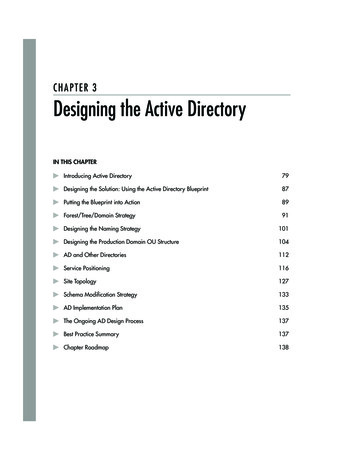

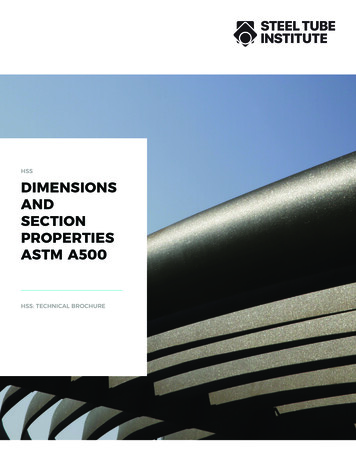
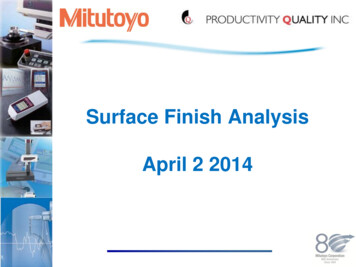
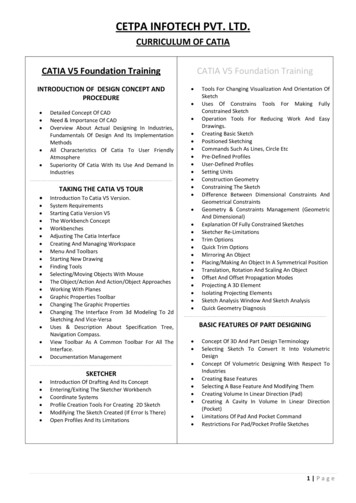

![[MS-ADFSOD]: Active Directory Federation Services (AD FS .](/img/1/5bms-adfsod-5d.jpg)

